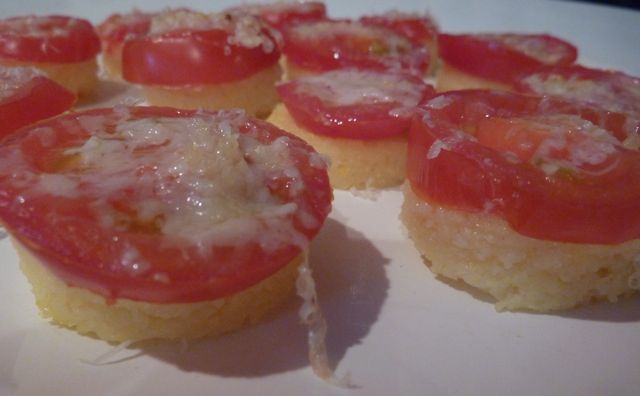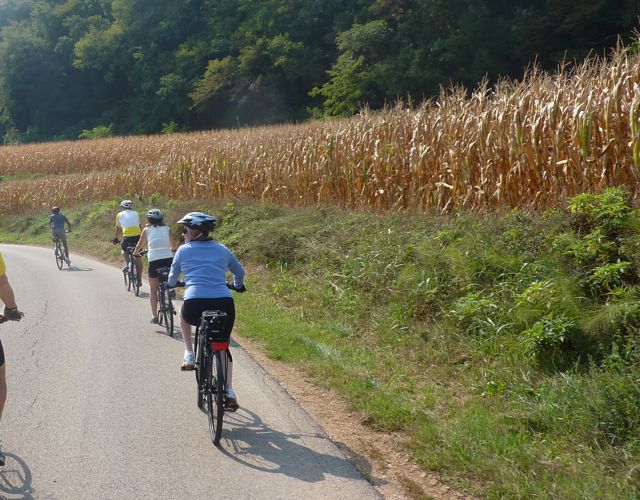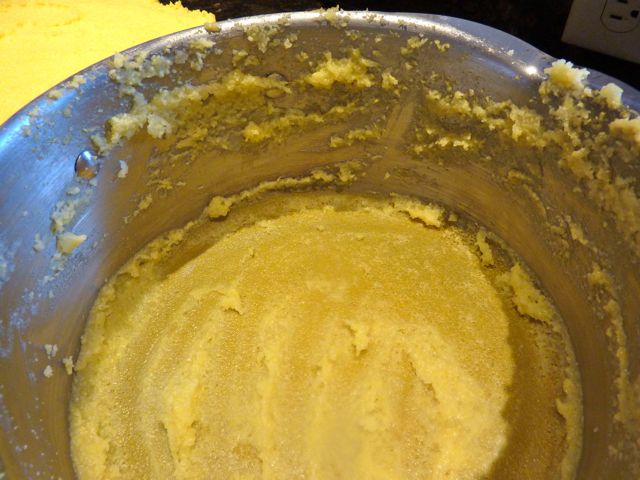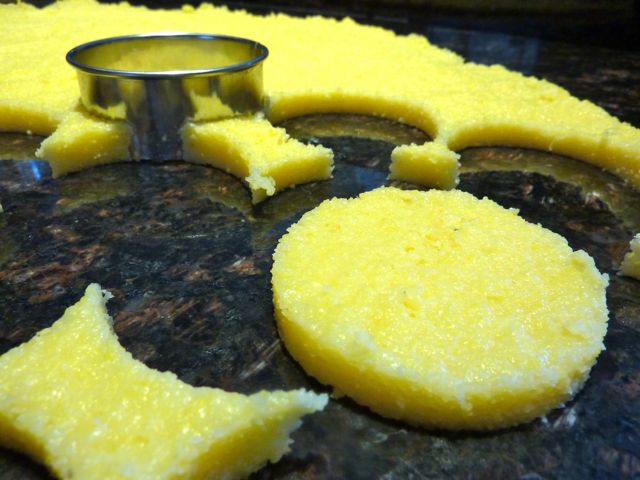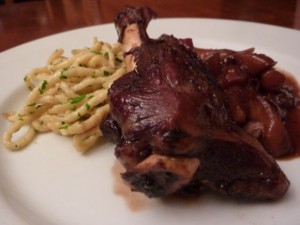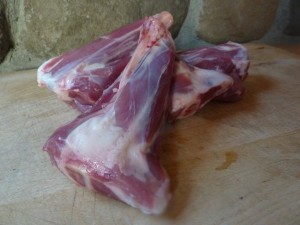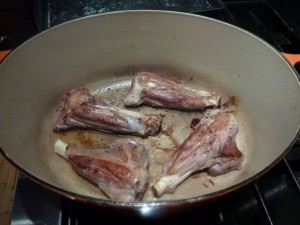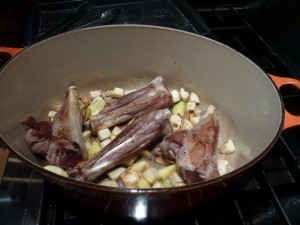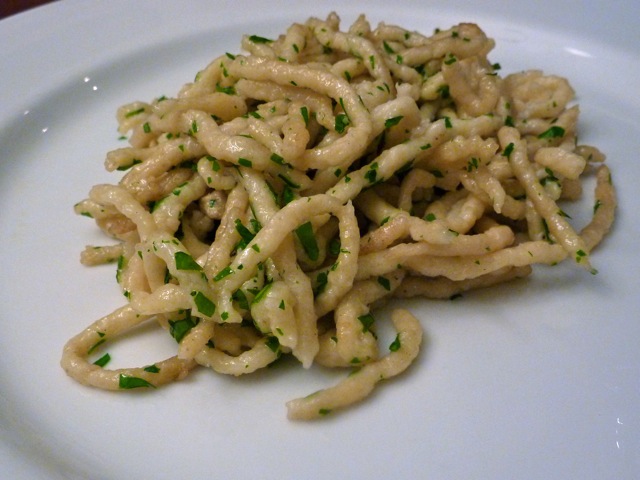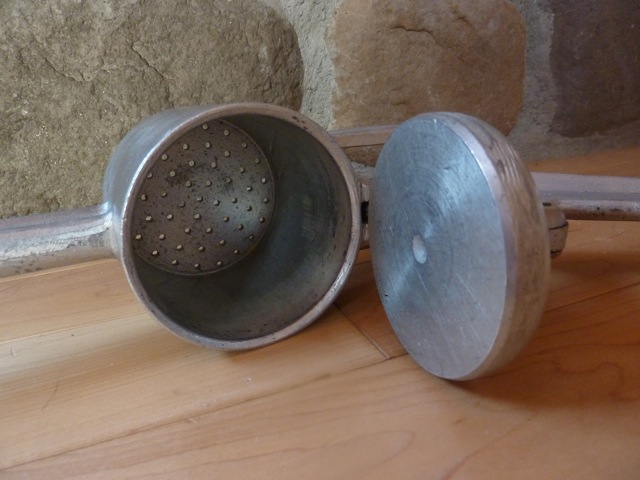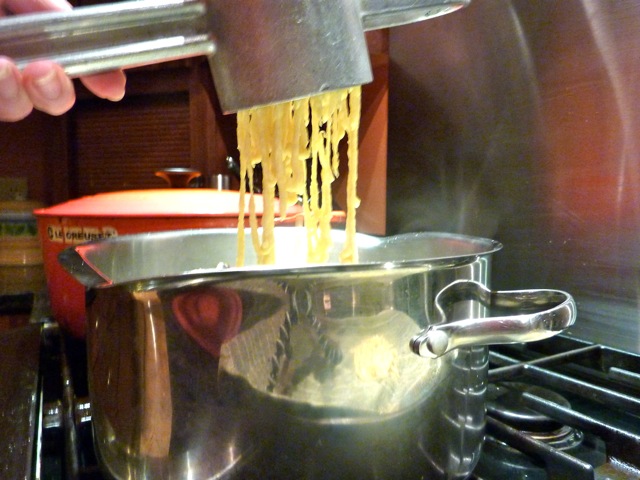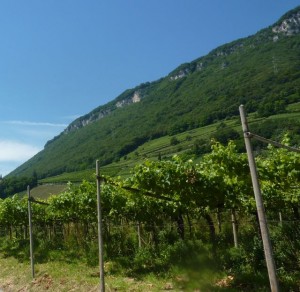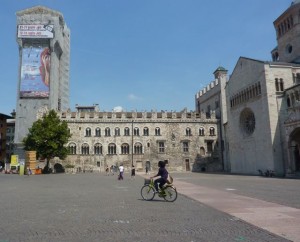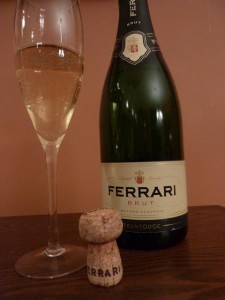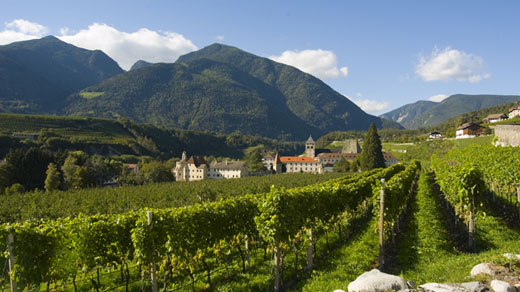
My explorations of the many wines found along the routes we cycle (learn more about our Bike the Wine Road tours) continue to uncover many wonderful wines that amazingly remain relatively unknown outside the region. My latest discovery: Kerner. The Kerner grape is a white originally developed in Germany, It was bred in 1929 by August Herold by crossing the red grape Trollinger, which is known in Italy as Schiava or Vernatsch, with the white grape Riesling. The name Kerner was chosen as a tribute to a poet and physician, Justinus Kener, who wrote songs and poetry on wine.
Kerner is most commonly cultivated in Germany, but was introduced into Sudtirol in the early 1970s, and awarded DOC status in 1993. Kerner exhibits considerable resistance to colder weather, so is ideal for the cooler climate of Sudtirol, and thrives in the higher elevations of Valle Isarco and Val Venosta. The wines made from this varietal are wonderfully rich in flavor, with bright floral aromas and a full, fruity palate.
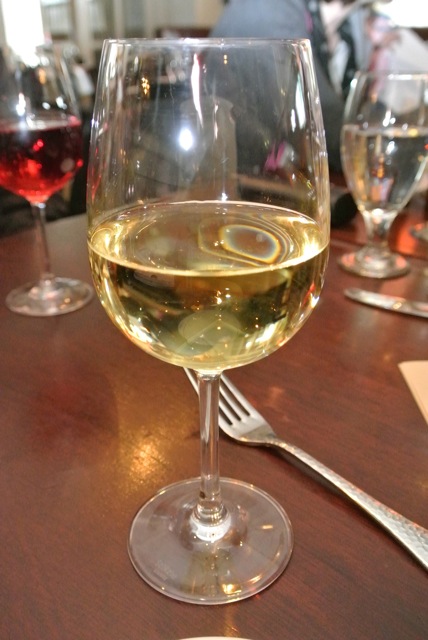
I recently tasted the 2010 Kerner from Abbazia di Novacella winery in Alto Adige. Interestingly enough, I ran into it twice this past weekend, once on the wine list at Rialto in Cambridge, MA, and then the very next day at Sel de la Terre, in Boston. The Abbazia di Novacella is located in Varna, just north of Bressanone in the northern-most wine growing region in Italy, where the mineral-rich soils, elevation and the cool climate combine to create white wines with intense aromas and flavors as well as fruity, mouth-watering acidity. A long drawn-out ripening period lasting well into the autumn is crucial. The most widely-grown grape varieties in their vineyards around Varna are whites: Sylvaner, Kerner, Gewürztraminer and Veltliner.
Abbazia di Novacella also owns vineyards to the south, in the warmer central region of Alto Adige. Here, they grow their red varietals, including the full-bodied, savory Lagrein, as well as Vernatsch/Schiava, Pinot Nero and the sweet Moscato Rosa.
The Abbazia di Novacella (Abbey of Novecella) is still today a working Augustinian monastery as well as a winery. Established in the 12th century, it has been a prominent religious and cultural center through the centuries. It has also been producing wines for over 850 years, and today combines a respect for the regional wine making traditions with state-of-the-art technology to produce some of the most highly-regarded wines in Alto Adige.
The 2010 Abbazia di Novacella Kerner is 100 percent Kerner. It is a pale, straw yellow in color with hints of gold and green. Intensely aromatic, with notes of grapefruit, peach, and tropical mango, and mountain flowers. It is full-bodied with green apple and white stone fruit flavors, its sumptuousness balanced with good acidity and citrus. It is a perfect match for summer pasta salads and shellfish, as well as spicy dishes. Its full flavor would hold up even against grilled white meats, fish and poultry.
